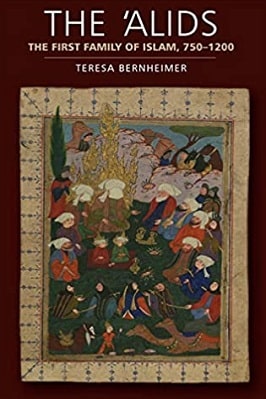
| Book Title | The Alids The First Family Of Islam 750 1200 |
| Book Author | Teresa Bernheimer |
| Total Pages | 113 |
| Book Views | |
| Language | English |
| Book Download | PDF Direct Download Link |
| Get Hardcover | Click for Hard Similar Copy from Amazon |
The Alids – The First Family of Islam, 750–1200
Teresa Bernheimer
The Alids – The First Family of Islam, 750–1200
Book Contents
- Introduction
- Genealogy, Money and the Drawing of Boundaries
- Shifting Hierarchies and Emphasising Kinship: ÝAlid Marriage Patterns
- The NiqÁba, the Headship of the ÝAlid Family
- The ÝAlids as Local Nobility
- Conclusion
- Bibliography
Genealogy, Money and the Drawing of Boundaries
Central to the ÝAlids’ claims to social distinction and entitlement to a variety of privileges was their close genealogical connection to the Prophet.
With the dispersal of the family to all parts of the Islamic world, which accelerated after the failed revolt of Íusayn b. ÝAlÐ at Fakhkh in 169/789, the establishment of certain controls over this connection became increasingly important.
This concern is reflected in the appearance of ṬÁlibid genealogies, genealogical works focusing explicitly on the ÓÁlibid branch of the BanÙ HÁshim, from the mid-third/ninth century onwards.
The ÝUmdat al-ÔÁlib of Ibn ÝInaba (d. 828/1424–5), which dates from the early ninth/ fifteenth century, is the most famous and widely used of such works, yet it stands at the end of the development of a specific genre or group of works: genealogies of the family of the Prophet, based on family (or local) registers, which were written by genealogists who were themselves predominantly ÝAlids or ÓÁlibids.1
Genealogy, of course, was by no means a new genre. Arab genealogy was a central form of early Islamic historiography, recording the heritage of the Arab pre- Islamic past in Islamic terms.2
The major difference between the ÓÁlibid works and the earlier Arab genealogies, such as Ibn al-KalbÐ’s (d. 204/819) Jamharat al-nasab, is the former’s concern with contemporary lineages.
Whereas the general Arab genealogies may be termed a ‘backward-looking genre’,3 the ÓÁlibid works are by contrast ‘forward-looking’ and concerned with their current times: Which lineages have survived? Where have they settled? What is their status? Do they belong to the families of nuqabÁÞ?
How can a genealogy be proved or disproved? The frequent references to false claimants in the genealogies suggest that such discussions were not merely of a theoretical nature, but that some very real interests were at stake.
While the genealogies do not always provide rich accounts – they often give little more than a long list of names, with few stories and even fewer dates – they do give a lot of prosopographical information, and this can be analyzed for a number of insights into the history and development of the ÝAlids. As is the case with much of the early Islamic source material, few of the ÓÁlibid genealogies were written in the period under focus in this study; most date from a slightly later period, mainly from the fifth/eleventh to ninth/fifteenth centuries.
Moreover, some of the main works have not survived, at least not in their original multi-volume form.
For example, the early fifth-/eleventh-century author Shaykh al-Sharaf al-ÝUbaydalÐ (d. 435/1043) says that his work TahdhÐb al-ansÁb is an abridgment of a much larger version of 10,000 pages, which is no longer extant, and the work of the frequently quoted AbÙ al-GhanÁÞim al-DimashqÐ (d. 438/1046) appears to be lost entirely.4
Some of the extant works, such as al-ÝAqÐqÐ’s (d. 277/891) KitÁb al-MuÝaqqibÐn, also seem to have contained more material than what survives today. In the case of the KitÁb al- MuÝaqqibÐn, this can be inferred from frequent quotations of al-ÝAqÐqÐ in later works that contain additional or variant details.5
In terms of geography, the authors of most of the ÓÁlibid genealogies were based in the eastern part of the Islamic world: Accordingly, information is most detailed on ÝAlids in the areas of Iraq, Iran, and Central Asia, as well as the ÍijÁz, and less comprehensive on ÝAlids in the West (especially North Africa and Spain).
It may be argued that this suggests that the ÝAlids were of more importance in the Islamic East, or developed a clearer consciousness as a group there;6 however, I would caution against rushing to such a conclusion, as it relies heavily on the surviving source material, which is clearly not all there was.
To read more about the The Alids The First Family Of Islam 750 1200 book Click the download button below to get it for free
Report broken link
Support this Website
Click here to join our Telegram group for new Books